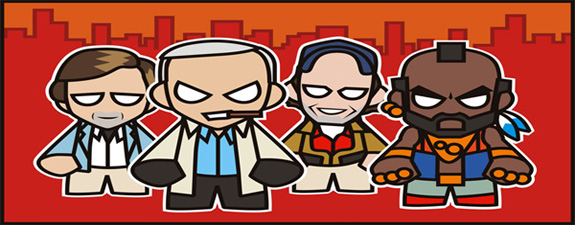Why storytelling isn’t going away.
I hear all kinds of statements being made with the ad industry – Are advertisers ‘pushing ‘campaigns again? Is the conversation over? Can you tell a story in 140 characters? Is micro-blogging and social media the dagger in the heart of storytelling? Nonsense. Social media and its neo-outcropping add more weight to the fabric of the story you’re trying to tell. The savvy creative understands that they need to create a ‘maze of context’ to their campaigns. Something that people cannot only read and watch, but feel a part of. ARG’s (Alternate Reality Gaming) have known this for years. The more elaborate the story, the more touch-points need to be created to sustain the deluge of audience participants. Now some will say you need to cover your bases for those who try to nitpick your campaign for errors or inconsistencies. To a certain extent this is true, look at this minority as your quality assurance team and not as trouble.
Any great story leaves enough holes, or thin areas, intentionally to build on the audiences desire to know more: LOST, The X-Files, Soap Operas, most Sci-fi (which is typically wildly open-ended) and of course The A-Team. How they got imprisoned in so many garages that had enough surplus to build an autobot I’ll never know. But I digress.

Storytelling in its purest form is ones own interpretation and delivery of compelling messaging. What makes it fun on both sides is the joy in hearing something told by someone who is dying to tell it. Here are a couple of key questions you must ask yourself: Is your story interesting enough to be retold repeatedly? What do you want the audience to add to your story without knowing it?
Four years ago the golden ticket was anything “viral” advertising. I’m going to dispel what you’ve been told viral advertising is. Viral advertising is the unintentional distribution of brand essence from one consumer to another. It started back as far a Juno putting a simply message at the bottom of their product “do you want free email too? Click here.” It’s not some video of a clown on fire that has two million hits, as appealing as the thought may be. This is where storytelling plays a primary role in your campaign fabric. Is your story so natural that you don’t feel compelled to tell someone “it’s some ad for soda but...” Does your campaign concept have a beginning, middle and an ending? If you had to sit and tell someone the whole campaign would your story surpass the fact that you’re also marketing?
Future advertisers need to understand the new caveat – the audience will change the ending. You WANT the audience to change the ending. I had a client scream on a conference call “WHAT DO YOU MEAN WE’RE CHANGING THE FINALE!?! THIS IS WHAT YOU SOLD ME!” Well Mr. Client your growing audience figured us out in couple of weeks and we have to change. Now it’s time to adapt and hope we can stay ahead of the break point.
If I learned anything from ARG’s it’s that if you feel so righteous that you have to stick to your ending, you might as well put a logo on it and charge money for entry. Chess is a great analogy to advertisers in that most agency’s have great opening moves, some have a decent middle game, but the end game is reserved for the winners that embrace change and optimization. Storytelling is the same, if I have to recite the work verbatim then I don’t care to tell it.